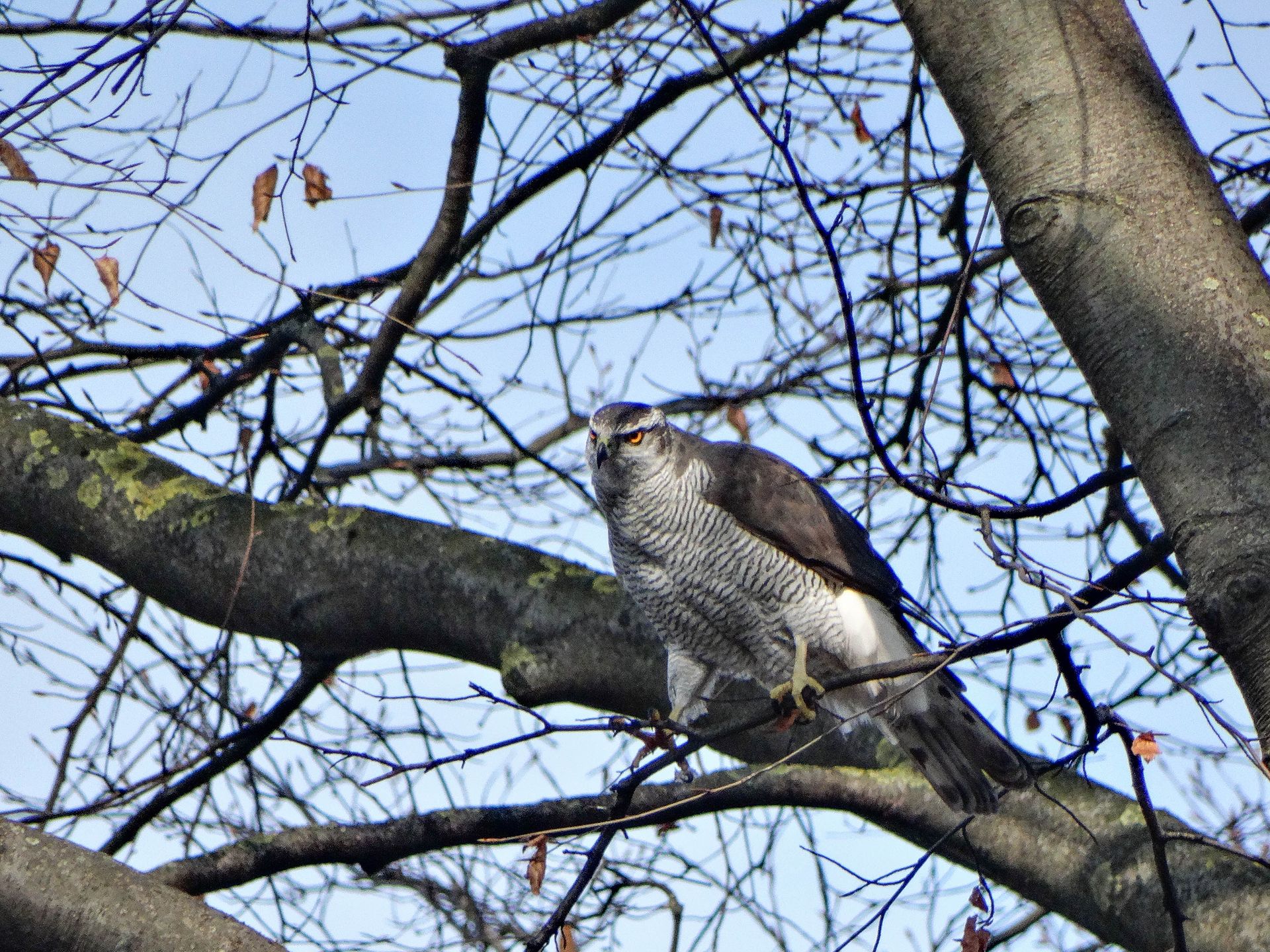Goshawk (Accipiter gentilis)
The formidable Goshawk and the Sparrowhawk are in many ways very similar. They resemble each other to look at, hunt in a similar way, and have almost identical nest sites and courtship displays. But in other ways this large, Buzzard-sized hawk is very much its own bird. It takes a wider variety of prey than the Sparrowhawk, for example, encompassing not just birds but also mammals, and these are often far larger than any attempted by even the most audacious Sparrowhawk.

By Nigel Wedge from Fife, Scotland – Goshawk, CC BY 2.0, https://commons.wikimedia.org/w/index.php?curid=17833641
It is also far hardier. Its range reaches well into the Arctic, and some individuals have been found wintering at 70°N, where few other birds survive. In such places Goshawks feed almost entirely on grouse, from Ptarmigans to the bulky Capercaillie, and since these prey species often have cyclic fluctuations in abundance (for example, about 7 years in the Ptarmigan), the predators tend to follow suit, sometimes not producing many young in lean years.

By Jevgenijs Slihto from Riga, Latvia – Northern goshawk // Accipiter gentilis, CC BY 2.0, https://commons.wikimedia.org/w/index.php?curid=58049835
The Goshawk hunts much like the Sparrowhawk, often striking in ambush from a concealed perch. Sometimes, though, it will rise to a great height and stoop down towards its intended prey in the style of a Peregrine, to gain speed; such a method is usually employed for catching highly mobile creatures such as pigeons. But if a Goshawk doesn’t make an initial hit when hunting, it will usually give up quickly, having a less persistent bent than many other predators.
In contrast to Sparrowhawks, Goshawks usually reuse nest sites for at least two years running – again, perhaps part of their lazy streak.
